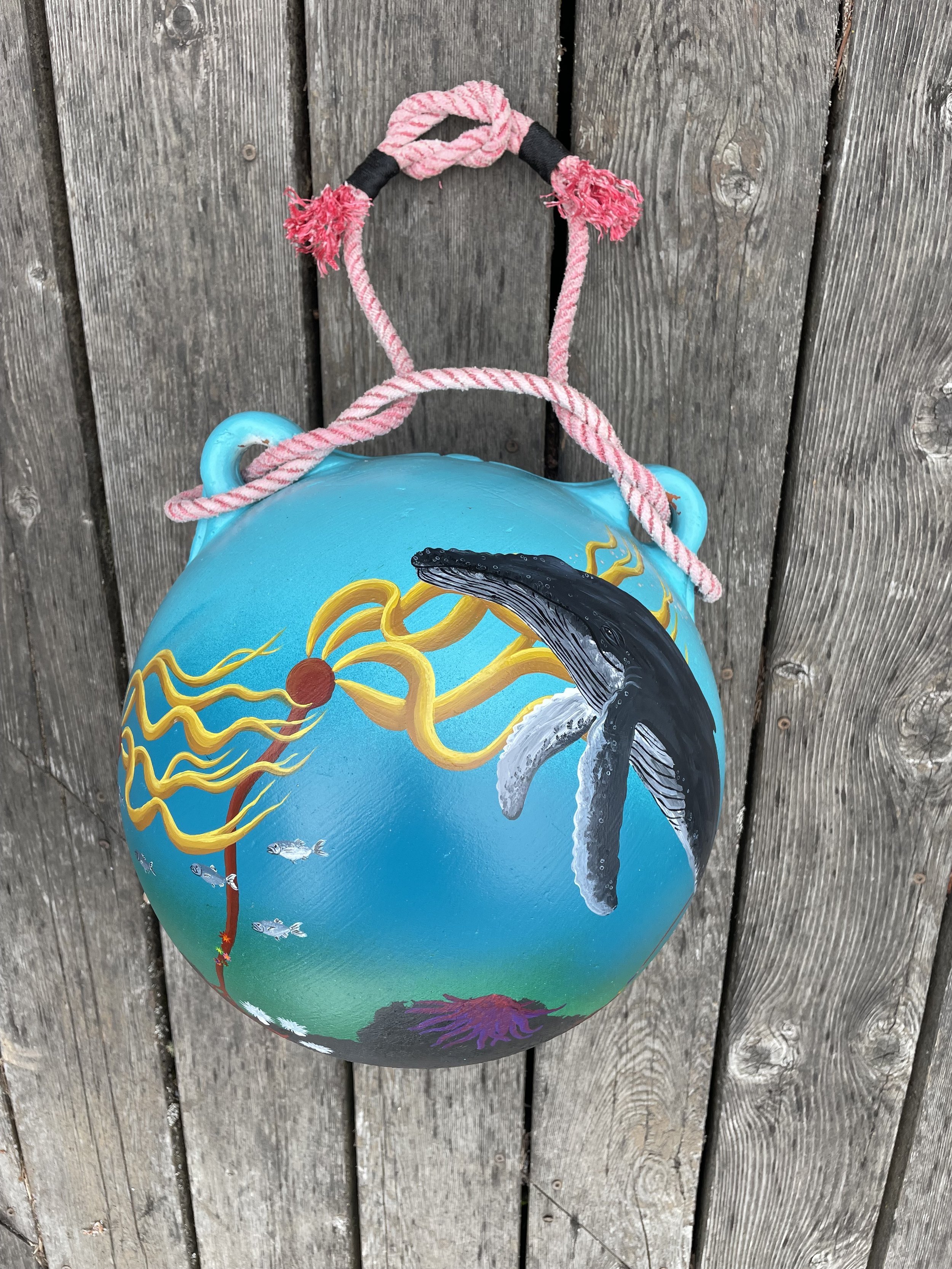
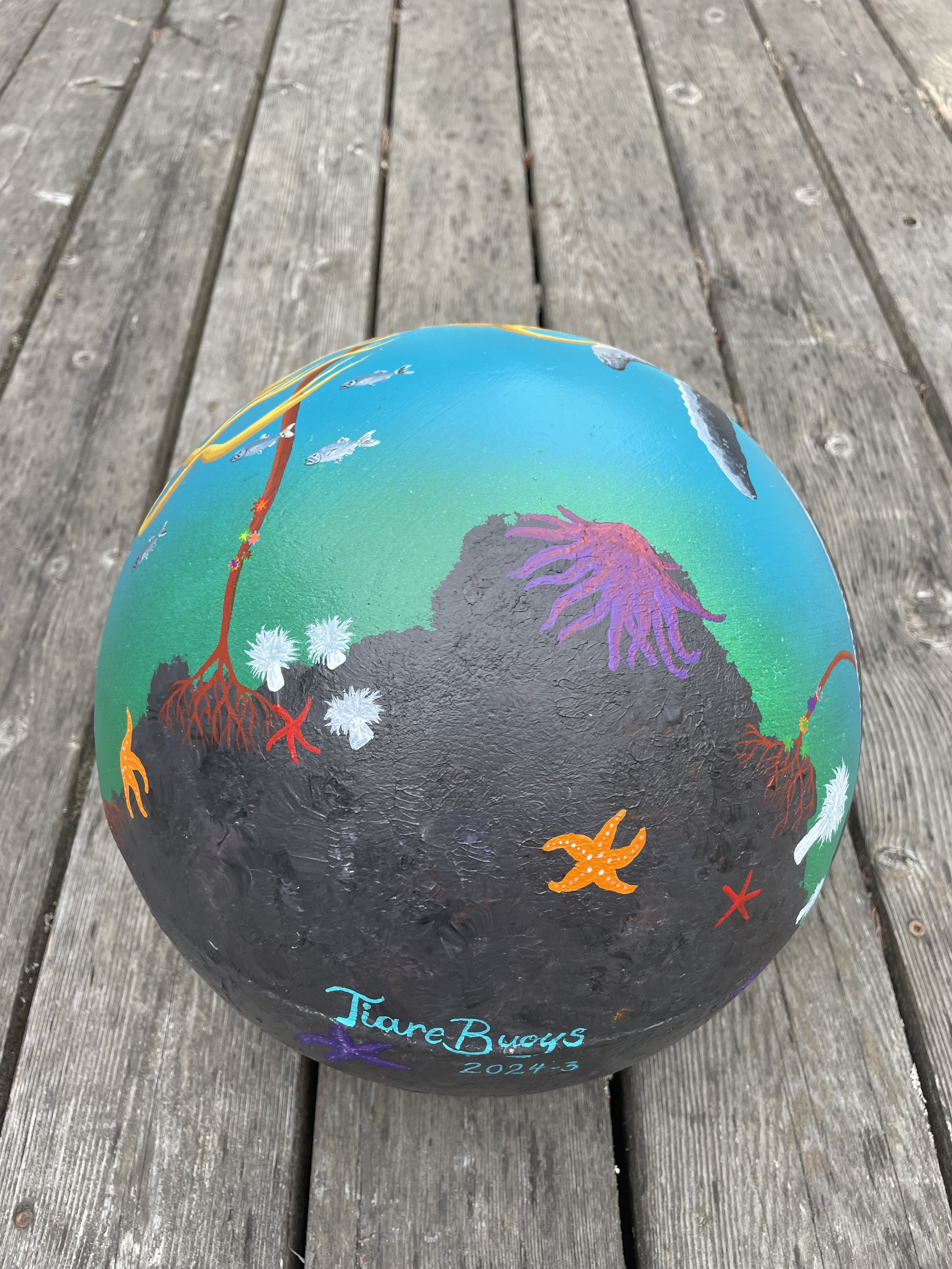
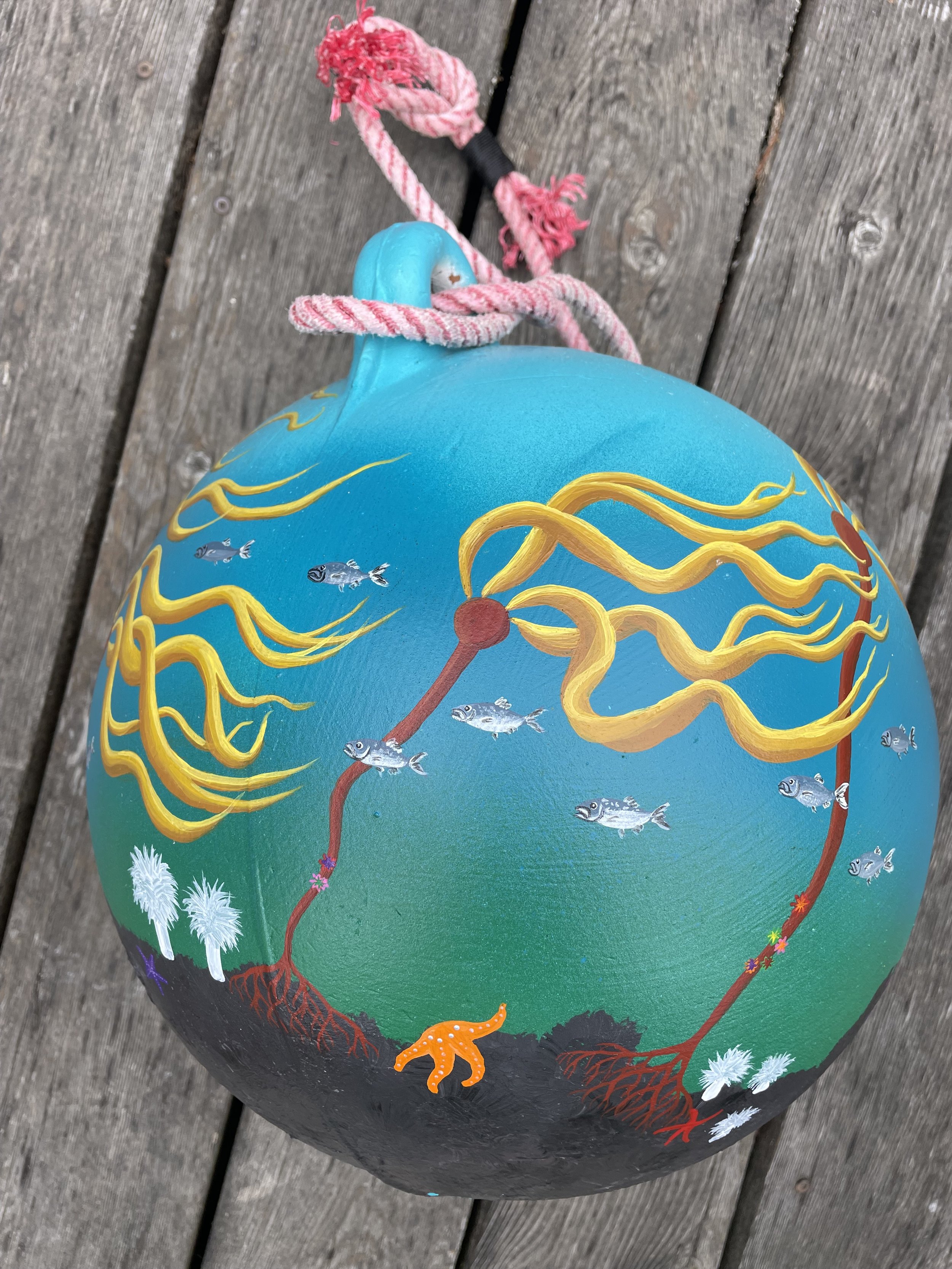
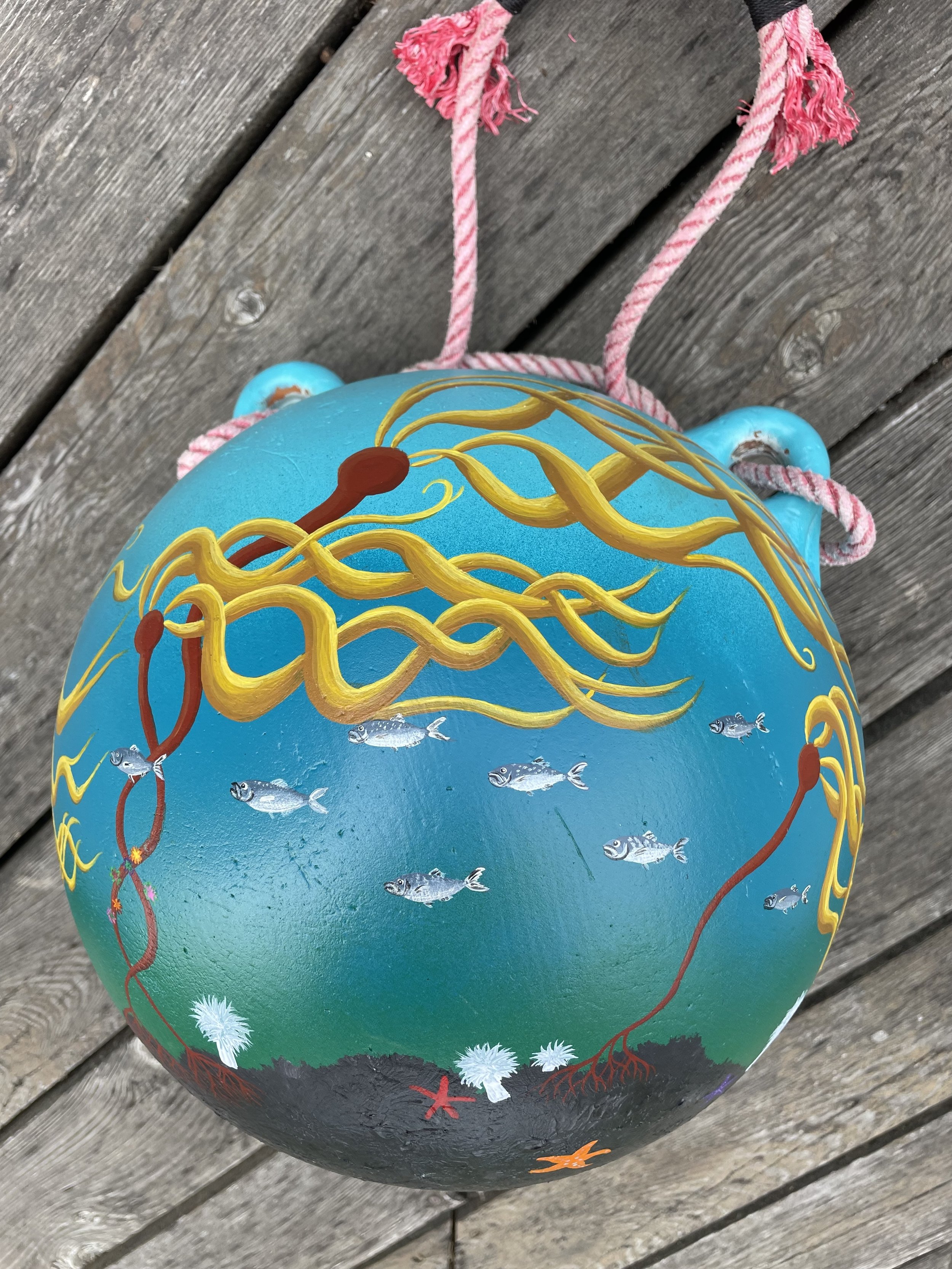
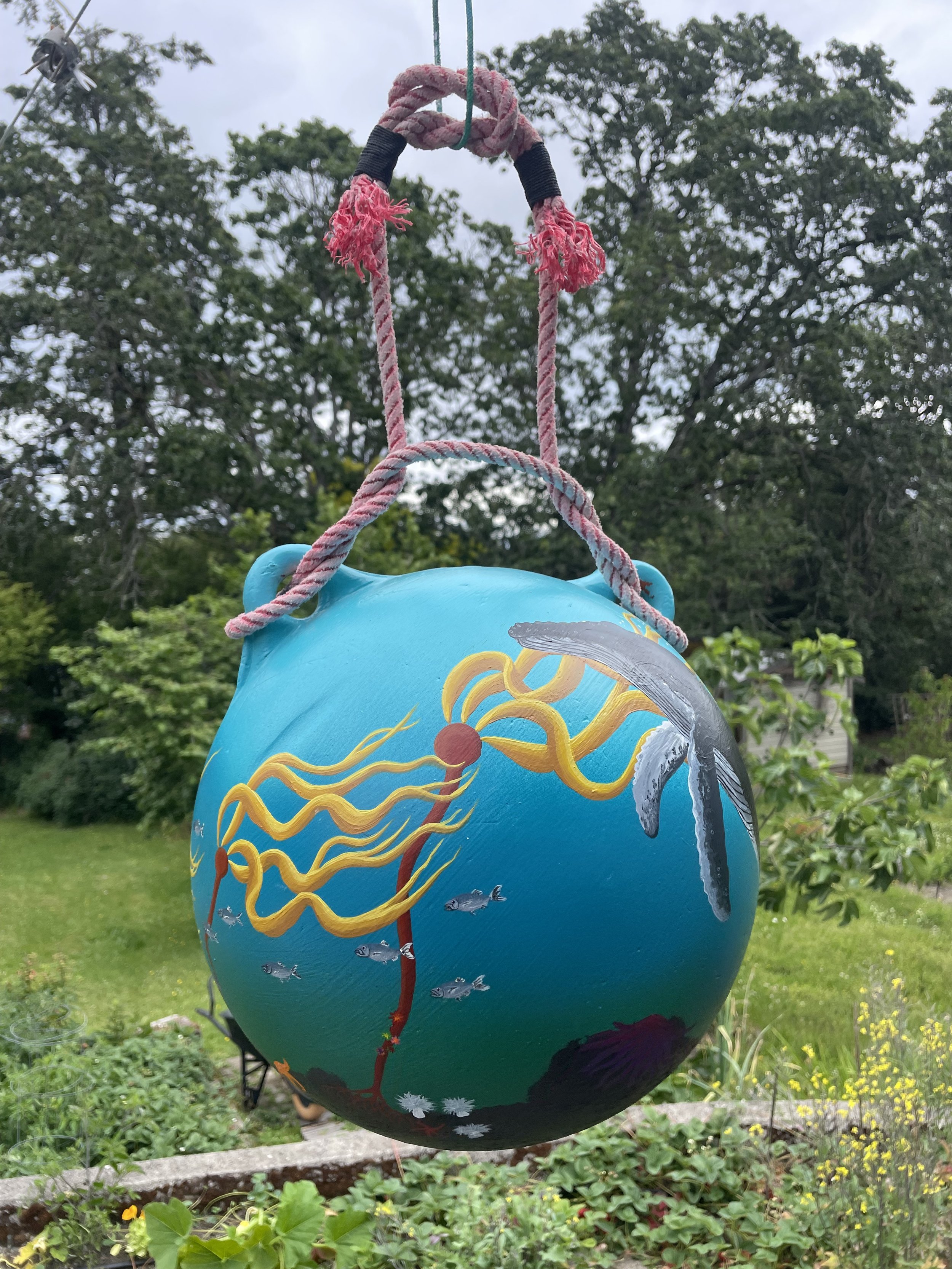
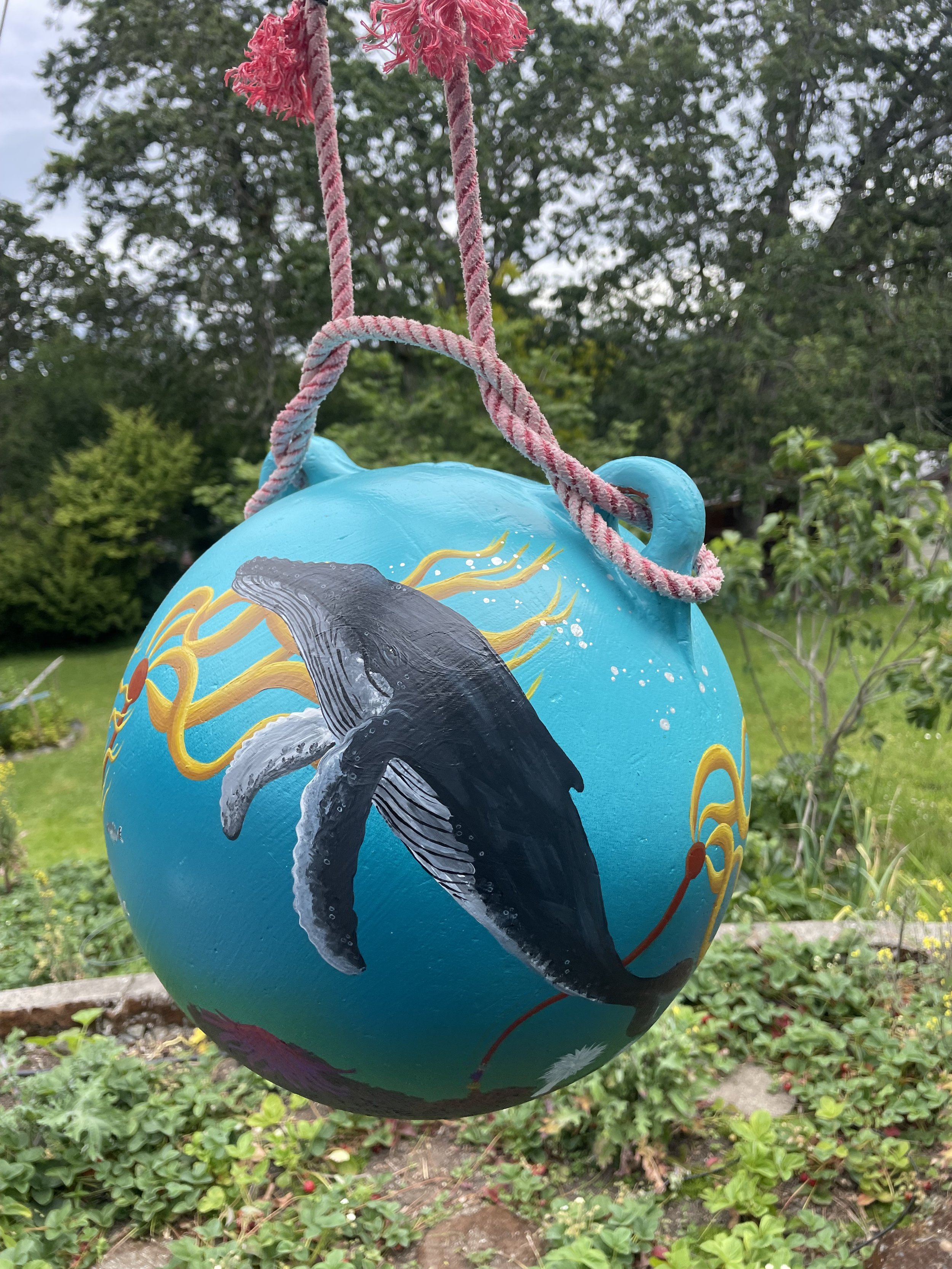
Humpback and Herring
*Available for purchase only at God’s Pocket Diving resort, Hurst Island
circumference 90cm- hangs 55cm long
I found this buoy floating in the middle of Hecate Strait. It likely came from a trawl fishery. The line it hangs on is used in many industries on our coast and I found it washed up on a beach on Balaclava Island near Port Hardy.
On this piece I have painted a humpback whale swimming with a large school of Pacific herring through a golden bull kelp forest on a sunny day. The buoyant carbon monoxide filled bulbs, hold the fronds of this brown algae near the surface so it can photosynthesize. The long blades stream behind the bulb, rippling in the current. On sunny days, swimming through a kelp forest can feel like you are under a ceiling of golden stained-glass which undulates and sparkles with the moving water. These kelp forests provide important habitat for many juvenile marine species on our Pacific Coast and are an essential part of a healthy marine ecosystem. Humpback whales were once rare on the Pacific coast due to intensive whaling practiced during the early 1900’s. By 1960 the last commercial whaling station on the BC coast had shut down and with the international moratorium on commercial whaling signed in 1982, humpback populations have been making a slow recovery and are now returning in great numbers to the West Coast of Canada. It is now common to see these amazing cetaceans up and down our coast, blowing great breaths into the air and feasting on the rich marine life in the area. It is magical indeed to watch these mammoth marine mammals silhouetted in the sunset as they cruise along. Herring return each spring to the coastal waters all along the BC coast to spawn. This is an incredible site, their milt turns the North Pacific waters Caribbean blue and their eggs are laid thick on kelp, sea grass, rocks and sometimes even crabs that stand too still for too long. Animals all over the coast feast themselves on this golden buffet and the proliferation of life is and incredible sight. I have also painted sea urchins, plumose anemones, proliferating/brooding anemones, orange social tunicates a sunflower sea star, ochre sea stars and vermillion sea stars.
10% of the purchase price of this piece of art will be donated in your name to the Marine Education & Research Society working to promoting conservation and understanding of marine ecosystems through scientific research, environmental education and marine wildlife response. MERS runs the “See a Blow? Go Slow” campaign aimed at reducing marine mammal and vessel interaction.